TABLE OF CONTENTS
- What Is Money Supply?
- How Is Money Supply Distributed In The Economy?
- How Is Money Supply Measured?
- How Does Money Supply Affect The National Economy?
- Factors Affecting Money Supply
- The Relationship Between Money Supply And Inflation
- The Role Of Money Supply During Economic Crises
- Money Supply And Its Impact On Investment And Financial Markets
- Practical Methods For Adjusting Money Supply
- Money Supply In A Global Context
- Conclusion
What Is Money Supply?
Money supply refers to the total amount of currency circulating within an economy, including both cash and bank deposits. Understanding money supply allows one to see its powerful impact on economic growth and inflation. Studies show that money supply can regulate economic activities, directly affecting the living standards of people. During periods of instability, such as the 2008 financial crisis, the money supply played a decisive role in market control and recovery.
How Is Money Supply Distributed In The Economy?
Money supply is not just the amount of currency circulating but also the way it’s distributed within the economy through financial institutions and banks. This directly impacts loan interest rates and business access to capital.
Example: In the United States, the Federal Reserve’s quantitative easing policy injected over $4.5 trillion into the economy from 2008 to 2014 to stimulate consumption and investment.
How Is Money Supply Measured?
There are several ways to measure money supply, reflecting its liquidity and circulation characteristics in the economy:
- M0: Base Money – Includes currency in circulation and bank reserves at the central bank.
- M1: Transaction Money – Consists of cash and readily accessible deposits, which are highly liquid.
- M2: Broad Money – Combines M1 with savings and time deposits, indicating the overall money volume in the economy.
How Does Money Supply Affect The National Economy?
Changes in money supply directly influence interest rates, which affect consumption and investment decisions.
- When money supply increases, interest rates generally decrease, creating favorable conditions for businesses and individuals to borrow capital.
- However, a rapid increase in money supply may lead to high inflation, posing challenges for governments in maintaining price stability.
Factors Affecting Money Supply
1. Central Bank Monetary Policy
Central banks adjust money supply through interest rate decisions and market interventions.
2. Reserve Requirements
The percentage of reserves that banks must maintain affects how much they can lend.
3. Money Demand In The Economy
The demand for money depends on economic conditions, impacting its circulation.
- Example: When central banks lower interest rates, borrowing increases, and circulating money rises.
- Observation: The Federal Reserve maintained low-interest rates in recent years to stimulate economic growth.
The Relationship Between Money Supply And Inflation
There is a strong connection between money supply and inflation.
Rapid increases in money supply can lead to sharp inflation.
Example: In Zimbabwe, an explosive increase in money supply caused inflation to exceed 79.6 billion percent in 2008.
Conversely, a reduction in money supply may result in deflation, discouraging consumption and investment.
The Role Of Money Supply During Economic Crises
In economic crises, money supply is a vital tool for central banks.
- During the 2008 global financial crisis, many central banks lowered interest rates and launched large stimulus packages to stabilize markets.
- These measures helped prevent a total collapse of the financial system.
Money Supply And Its Impact On Investment And Financial Markets
Money supply is closely linked to financial markets.
- When money supply increases and interest rates decrease, stock and bond prices often rise, yielding higher returns for investors.
- Abundant money supply enhances capital accessibility, making financial markets more attractive.
Practical Methods For Adjusting Money Supply
Central banks use several tools to adjust money supply:
- Open Market Operations: Buying or selling securities to regulate money in the economy.
- Reserve Requirements: Setting the percentage of reserves that banks must maintain.
- Discount Rate: Adjusting the interest rate for loans provided by the central bank.
These tools allow central banks to adjust money supply flexibly, aligning with economic conditions.
Money Supply In A Global Context
Countries use different methods to measure money supply, resulting in variations in economic management.
- Changes in the money supply of major economies like the United States or China can significantly affect other countries.
- Nations must adapt their monetary policies flexibly to external impacts to ensure domestic economic stability.
Conclusion
Understanding money supply is essential for analyzing its impact on economic growth, inflation, and financial markets. By using tools like monetary policies, central banks can effectively manage money supply to achieve economic stability and growth

DLMvn > Glossary > Understanding Money Supply
Tagged Articles
How Central Banks Control the Money Supply
Expand Your Knowledge in This Area
Glossary
What Are Derivatives? Learn Now to Not Miss Investment Opportunities!
Glossary
DXY: The U.S. Dollar Strength Index
GlossaryTrading Indicators
Moving Averages – A Comprehensive Overview
Glossary
Monetary Policy vs Fiscal Policy: What’s the Difference?
Glossary
Why Is Economic Growth Important?
Glossary
Exchange-Traded Funds (ETFs): An Overview